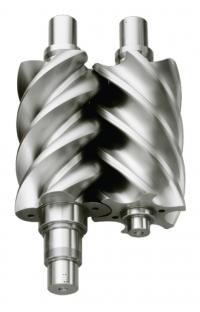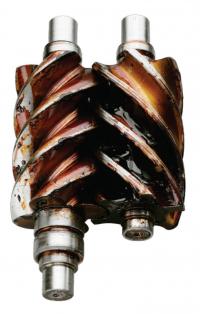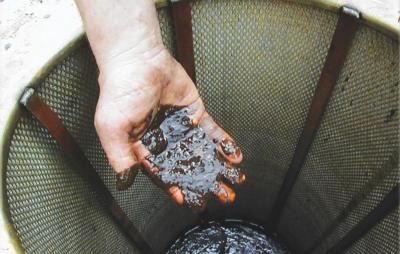While biodegradable, energy efficient, and recyclable are terms that come to mind when thinking about protecting the environment we live in today, these three terms are also, ironically, directly related to protecting a company's bottom line... profit.
The fact is, "green" initiatives are literally taking the world by storm. There is a "Green Czar" in Washington, electric vehicles, clean power technologies, and now many compressor manufacturers are following suit. These days, everyone is looking for better ways to reduce their carbon "footprint".
One way to greatly reduce your carbon footprint is to select the right compressor fluid for your company, your manufacturing process, and the environment. But, with a multitude of compressor fluids on the market today, how does one choose the brand that is best suited for their current manufacturing and business environment? Do you choose the brand that gives you the best sales pitch… the best pricing... or simply the one that offers the best overall value for the money? Believe it or not, the lowest price does not always determine the long-term cost.
Before making a significant decision on a new compressor fluid, many variables should be considered to insure you are making the right decision to maintain the best interests of your company and the environment.
Why do compressors need fluids?
To really understand compressor fluids, one should first understand the main function a fluid performs in a rotary screw air compressor. In many ways, a compressor fluid is to an air compressor what blood is to the human body. In fact you might say fluid is the lifeblood of an air compressor. While your heart pumps and circulates blood to keep your body functioning, an air compressor is circulating fluid to keep the machine functioning properly. So according to this analogy, the compressor air end would be equivalent to the body's heart.
To optimize their value, all air compressor fluids should effectively perform three primary functions:
- Remove the Heat of Compression. The heat is not caused by friction, but by the physics of the air compression itself.
- Seal the Rotors. Since the rotors do not touch, the fluid creates the airtight seal between rotors.
- Lubricate the Bearings. This ensures smooth, trouble-free performance.
The two primary enemies of rotary screw air compressors are HEAT and VARNISH. Both are directly related because high temperatures tend to create more varnish, while more varnish will, in turn, create more heat. When combined, the two create a vicious circle.
Know the base stocks
In the current market there are hundreds of compressor fluids, dozens of fluid manufacturers, and hundreds of resellers striving to earn your business. While most of these fluids have different base stocks, each is unique and has different properties—some good, and some not so good. The remainder of this article will address the factors that make certain base stocks more environmentally compatible and bottom-line friendly than others.
Base stocks are commonly used in compressor fluids today:
Hydrocarbons
Hydrocarbon-based lubricants have been around nearly as long as the rotary screw air compressor itself. Originally all rotary screw compressors used hydrocarbon-based fluids; however, today's greatly improved technology has literally left hydrocarbons in the rear view mirror.
Most hydrocarbons lubricate well, seal the rotors, and contain anti-corrosive additives. And, although these products are usually the lowest priced, they frequently are accompanied by hidden added costs. Hydrocarbons do not transfer as much heat as synthetics, and they also varnish easily in the compressor. As we mentioned earlier, varnish is the number one problem for rotary screw compressors. Unlike other base stocks, the condensate produced by compressors using hydrocarbons is not biodegradeable.
Bottom Line: Hydrocarbons have the potential to cause varnish, which leads to a less efficient air compressor, and could potentially cause up to 10% more energy consumption. The compressor condensate produced by hydrocarbon-based products is also not biodegradeable which leads to expensive condensate disposal costs. The fact is, hydrocarbons do not offer the combination of properties to effectively reduce your environmental footprint.
Polyalphaolefin (PAO)
Essentially the best fluids the petroleum companies have to offer, PAOs comprise the top-of-the-line hydrocarbon-based products. While most offer a higher purity level than the basic hydrocarbons, they still suffer from many of the same drawbacks as basic hydrocarbon fluids. For instance, PAOs are as limited in heat transfer as the rest of the hydrocarbon-based oils and will varnish if run at high enough temperatures. In addition, the compressor condensate produced by these products is also non-biodegradeable.
Bottom Line: PAOs do offer better performance than hydrocarbons, but they do not offer the right combination of features to reduce your environmental footprint. In addition, they have the potential to cause varnish and can ultimately lead your compressor down a path of major inefficiencies. Lastly, the compressor condensate produced by PAOs must be disposed of, which can directly affect both the company's bottom line and the environment.
Why Do Hydrocarbon-Base Stocks Varnish?
• All components are liquid at ambient temperature
• Some become solid at higher temperatures
• Some tend to plate on metal parts
• The varnish they create will insulate and reduce heat removal, thus causing temperatures to rise and solid components to form
 |
 |
Dangers of Varnish
(as shown on the photo above)
• Can cause air end failure
• Creates an inefficient machine
- Leads to 10% loss of efficiency, or 10% increase in energy costs
• Increases operating temperature
- High temperatures shorten fluid life, and lead to high temperature
shutdowns, which ultimately result in costly plant downtime
• Could plug separators and oil return lines
• Could coat and restrict oil cooler
Diesters
Diesters were initially developed for use in reciprocating air compressors to help control both carbon build-up on the valves and high operating temperatures. However, in rotary screw compressors, they are not only incompatible with many elastomers, but they have the potential to form sludge.
Diesters are often used as the primary ingredient in compressor fluid blends. However, users should BEWARE that many Polyglycol/Ester blends actually turn out to be a Diesters base with a minimum amount of Polyglycol.
 Bottom Line: Diester-based fluids have the potential to cause sludge, which can not only become very costly to a company's bottom line, but also can also reduce compressor efficiency, and become quite costly to remove once it forms in a compressor system. What's more, the condensate produced by diester- based fluids is non-biodegradable, so diesters do not reduce your carbon footprint.
Bottom Line: Diester-based fluids have the potential to cause sludge, which can not only become very costly to a company's bottom line, but also can also reduce compressor efficiency, and become quite costly to remove once it forms in a compressor system. What's more, the condensate produced by diester- based fluids is non-biodegradable, so diesters do not reduce your carbon footprint.
Polyglycol/Polyol Esters (PAG/POE)
PAG/POE fluids are among the most environmentally compatible, and economical fluids offered by compressor and fluid manufacturers today. First of all, these fluids will not varnish in the machine, rather, they will remove existing varnish when performing a flush conversion. They also provide a higher level of thermal conductivity, which will help equipment to run cooler, making it easier to stabilize operating temperatures. PAG/POEs also offer the safety features of the highest flash point, very low carryover, and biodegradeable condensate. Keeping the "green" initiative in mind, most PAG/POE fluids are also recyclable due to a high BTU value per pound low ash content.
PAG/POE fluids are also compatible with virtually all air compressor components, so conversion can be accomplished without any major issues. In addition, the compressor condensate produced by PAG/POE fluid filled machines is biodegradable which allows condensate to be directly discharged into sanitary sewer systems.
Study of Biodegradability
Sullube™ Biodegradability
Traces of Sullube present in compressor condensate have been shown to be biodegradable in a sewage treatment plant environment (EPA test method 796.3100- 82% degradation in 28 days)
Prior to disposal of condensate in a sanitary sewage treatment system (POTW), written permission must be obtained from your local authority.
Bottom Line: Polyglycol/Polyol Ester-based fluids offer a company multiple benefits: Compressors utilizing these fluids produce condensate that is biodegradable, thus reducing a company's environmental footprint, as well as its costs for condensate disposal. Better yet, PAG/POE fluids do not varnish and will also remove existing varnish that may have built up in a compressor, thus creating a more energy efficient machine. Once the life of these fluids has expired, they can be recycled. This will not only create a more favorable bottom line, but also help the company achieve their own "green" initiatives.
A Sustainable Future
As previously noted, companies can reduce their environmental footprint in many ways. But choosing the right compressor fluid for each application is by far one of the simplest ways to achieve a higher level of "green”. Before rushing into a quick decision that could change the environment and a company's bottom line, don't forget to consider fluids that stress the following:
• Biodegradability
• Energy efficiency
• Recyclable
Zach Switalski is an Account Manager with Sullair Corporation’s Parts Division, Michigan City, IN 46360
For more information, contact:
Sullair Corporation
Phone: 219-879-5451
Email: sullaircompressors@sullair.com
Website: www.sullair.com




